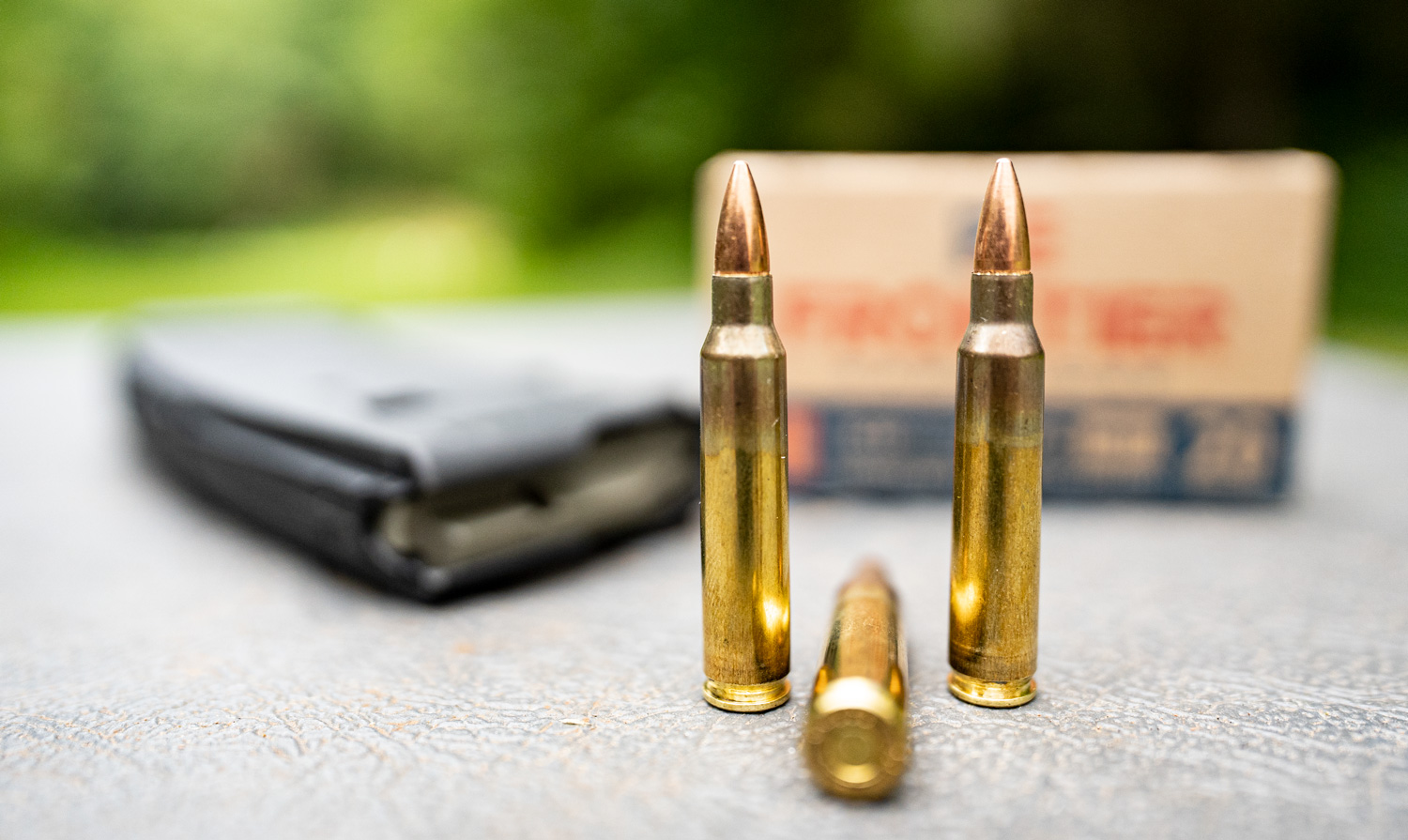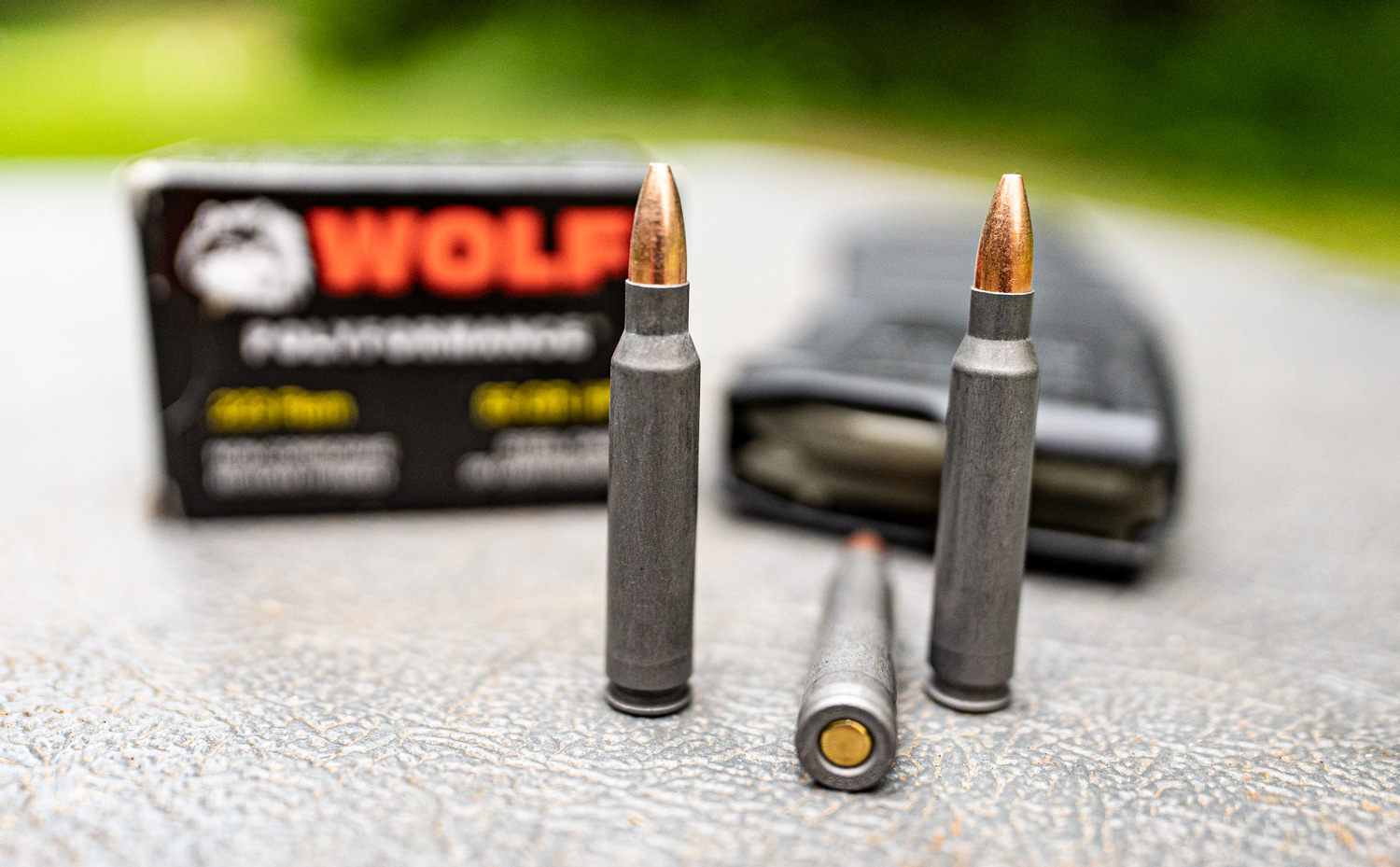If you’re ammo shopping, it’s pretty common to see both steel cased and brass cased options. Let’s explore the differences each casing offers you as a shooter and if you should have a preference in the steel vs brass cased ammo debate.
As you shop for ammunition, you’ll inevitably run into a box of cartridges labeled “steel case.” Most of the time, the box has a low price tag, often significantly lower than other products found on the shelf.
Should you buy it?
Steel is one of the main materials manufacturers use for ammunition cases. The other material ammo makers rely on for casings is brass. While steel ammunition is certainly a viable option for numerous gun owners, you may find that brass is the best choice for you. With the right information, you can make the appropriate choice for hunting, target shooting, and self defense.
Short Answer: Steel vs Brass Ammo
Steel is cheaper to buy but more rigid inside the chamber of your firearm. It’s not easily reloadable so you can’t collect your casings and use them again. Brass is more expensive and more malleable inside firearm chambers. To a certain extent, the casings are reloadable.
Our advice: many shooters believe steel casings wear out a gun faster than brass. But cheaper ammo has its perks. If you’re going to shoot a lot with a firearm that’s replaceable, the ammo cost difference over that course of training is often enough to buy a new pistol or rifle.
Now, more details on both steel and brass ammo casings.
About Brass Ammo Casings
The Case for Brass Cases
As the standard material for ammunition cases, brass has a lot of advantages that make it a superior option over steel. Of course, it is far more prevalent especially among American manufacturers. Steel casings are still somewhat of a unique item, while brass is material used in the vast majority of ammunition products.
But just because it’s used more does not automatically mean it’s better.
Brass Casings Are Malleable
Brass has been the case material of choice for decades, largely due to its “malleability.” Basically, it’s relatively easy to form and machine into a variety of shapes and sizes, and it tends to maintain a strong structure after machining. Because it’s easy to form, manufacturers can create it easier than many other metals. Easy manufacturing is generally low-cost manufacturing, so this means the final product is more affordable to the consumer. But of course, not as cheap as steel!
Because brass is malleable, it’s also ideal for the specific requirements of shooting. When the propellant inside the case explodes, controlled and even expansion from the case is required. Brass casings expand evenly to completely fill the chamber of a firearm. This creates a more reliable forward pressure. That consistent pressure creates consistent energy, speed, and trajectories.
Consistent expansion is the main reason that brass has become the dominant material for ammunition cases. But there are other benefits.
Brass tends to be naturally smoother, creating less friction in the chamber. With little to no coating (for most ammunition, no coating), brass provides smooth feeding from the magazine to the chamber and out the ejection port. Even in single-shot firearms or revolvers, brass generally allows for easier extraction of a spent case.
Compared to steel, brass is also corrosion resistant. That’s not to say that brass can’t corrode and breakdown, nor is it to say that it won’t leave corrosion in your firearm. Brass simply resists corrosion better than steel, and it does so by its very nature, so special cost in generally not required.
In summary, brass casings deliver:
- Easy manufacturing, resulting in an affordable price
- Consistent expansion in the chamber
- Smooth feeding and case extraction
- Corrosion resistance
Steel Casings
The Case for Steel-Cased Ammo
Brass may be the dominant material, but there are plenty of shooters in America and across the globe that prefer steel. As a raw material, steel is much more affordable than brass, which means manufacturers can purchase the material at a lower cost, then offer the final products at a price that attracts many shooters away from brass cases.
Pricing is the main reason most shooters select steel casing. Steel tends to be a more affordable material, so you can often find products priced well below the typical cost for a brass-cased cartridge.
How Much Cheaper?
We see the pricing advantage play out on a few different cartridges. For example, as of writing this article the most affordable .308 Winchester round was Wolf’s steel-cased 150-grain ammo. In fact, it was only $0.39 per round and $0.30 lower than the second-most-affordable product. (Price used for example only. For current pricing, see website.) When we published this article, steel-cased ammo had the lowest per-round pricing for 6.5 Grendel, .30 Carbine, and 9×18 Makarov, and more.
But overall pricing depends on many different factors. The products that were priced at the bottom of their cartridge list were from companies that focus on providing low-cost, high volume ammunition. (Specifically, Wolf Performance Ammo and Tula Cartridge Works.) So it’s reasonable to say that steel casing is not the only reason these cartridges were priced so low. But it would also be dishonest to claim it’s not a factor.
There is also a theory that steel ammo may perform better in certain firearms, especially AK-47 and similar products that extract with slightly more force than other ammunition rounds. Whether this theory is true has not really been tested thoroughly, but some believe that steel cartridges, because of their greater strength, are more reliable than brass in high-powered semiautomatic weapons.
In summary, steel casing delivers:
• Cheaper price (usually)
• Potential for better performance in high-force firearms
Steel-Cased Ammo: What’s the Risk?
The overall disadvantage of steel casing is performance, especially feeding. Steel creates more friction between itself, the magazine, and chamber. So shooters generally believe it leads to more jams than brass ammo. This can, however, be compensated with coating, but some worry that this coating could build up in your firearm and create long-term issues. Of course, certain firearms can really eat up steel cased ammo too. Like most things related to shooting, it’s important you are familiar with your firearms and know what they handle well.
Steel is also harder to reload. This may not be a concern for most shooters and gun owners, but because steel is harder, it can be more difficult to manipulate; amateur reloaders may have difficulty working with steel cases and may want to stick with brass. Also, it seems reasonable to assume that the coating on steel casing would wear down, so even if you could reload steel, you would eventually have high-friction cases.
Manufacturers typically coat steel with a special lacquer to reduce internal friction and delay corrosion. This can create issues in firearms, as the rounds leave that lacquer in your chamber. If you are shooting hundreds of rounds, the chamber will get hot and the lacquer is more likely to come off in the weapon. This is a concern for many shooters who don’t want to harm their high-priced rifles and firearms.
When to Select Steel vs Brass Ammo?
Generally speaking, most people will only choose steel for high-volume shooting or low-importance situations.
By “low-importance,” we basically mean target shooting. At the range, a jam or reduced accuracy is a mere inconvenience. But in hunting, it can mean losing your trophy or wounding an animal, leading to prolonged suffering. In personal defense, the consequences are even more significant.
This is why many gun owners only use steel casing at the range, and only use steel-cased ammo in target firearms. In other words, they don’t pump steel cases through their self-defense pistol.




